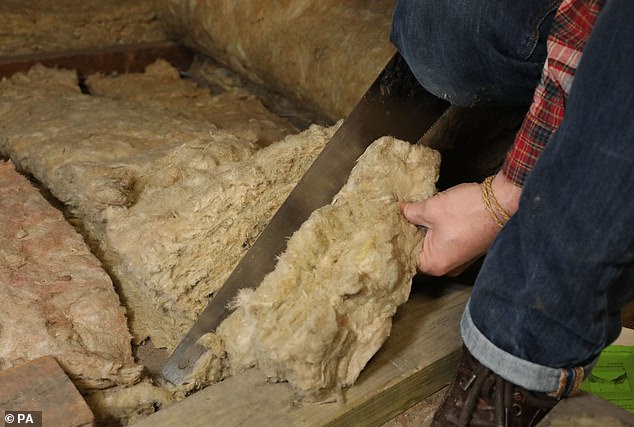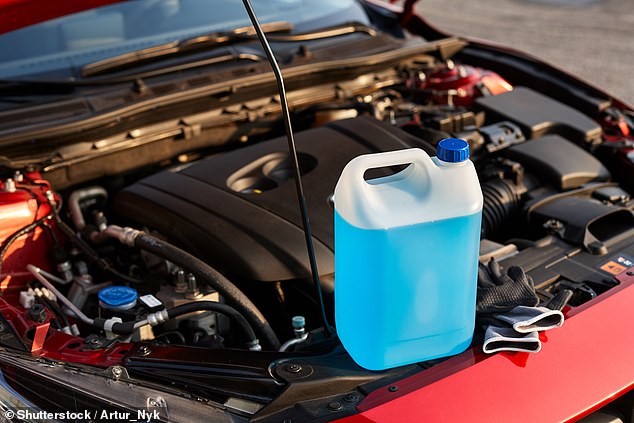How to keep your home warm, your costs low and your car on the road as the big cold grips Britain
As Britain is hit by a bitter cold snap, almost a million Cold Weather Payments have been paid out to people living on benefits in England and Wales. These occur during cold spells between November 1 and March 31, when the average temperature is zero or lower for seven days in a row.
Even if you’re not queuing for one of these additions, it may be tempting to turn up your central heating or switch on the electric fire.
But if you do, you risk a shocking bill landing on your doorstep in the coming weeks.
The energy price cap increased by £94 to £1,928 per year for a typical dual-fuel household paying by direct debit on January 1.
This is 5 percent more than the previous October price cap of £1,834 per year.
But there are still ways to keep the heat in and keep costs down. Here we explain how, with the help of energy experts.
Experts recommend checking radiators for cold spots as they may need to be ‘bled’
Track your usage
Ben Gallizzi of price comparison website Uswitch said: ‘Unfortunately for many consumers this cold snap has coincided with a rise in energy bills.
‘It remains important to monitor your energy consumption and change your habits in a safe and manageable way while still staying warm.’
He says you can easily do this by reducing the flow rate of your combi boiler.
Combination boilers work best when the water entering your radiators is heated to 60 degrees or lower.
However, when most boilers are installed, the flow rate is set to a temperature of about 70-80 degrees.
To adjust your boiler, turn the heating knob on the front all the way up so that the display shows the maximum supply temperature.
Then slowly turn the knob down so that the display reads 60 degrees.

Insulation is crucial, and not just for coops: draught-free windows and putting a jacket on a hot water heater are also important to save energy and keep bills low
DIY insulation is essential
About 21 percent of the heat lost in the home goes through doors and windows.
Joanna O’Loan, from the Energy Saving Trust, recommends concept proofing as one of the most cost-effective solutions.
“Drafts draw warm air outside, causing your heating system to use more energy to keep your home warm,” she says.
‘Attaching cheap draft excluders to windows and doors is a relatively quick and easy job that can save you around £45 a year.’
A roll of draft insulation costs around £5 to £10 and can be picked up from DIY stores such as B&Q or Wickes.
To install, cut the insulation strips to fit your window and door frames, peel off the plastic backing at the bottom and press the foam tape against the inside to secure it.
When installing, be sure not to intentionally block any vents, as these allow fresh air into your home, Ms. O’Loan recommends.
According to Citizens Advice, insulating your boiler with a hot water cylinder jacket can also save you around £50 a year on your energy bills.
A hot water cylinder stores water after it has been heated by your boiler system. It is therefore important that the water is kept as warm as possible, so that you can take a warm shower at any time.
The jackets usually cost less than £30 and can be purchased online from Screwfix, Toolstation or B&Q.
Also keep the doors of rooms you don’t use and the room you heat the most closed to keep the heat in.
Close the curtains at the end of the afternoon and you keep the warmth of your house in and cold drafts out.

Sofas should not be placed in front of radiators to prevent heat from being absorbed instead of spreading throughout the room.
Don’t neglect your radiators
Another immediate solution to keep heat circulating throughout your home is to move furniture further away from your radiators.
Benches placed in front of radiators absorb heat instead of spreading it throughout the room.
Place your furniture just a few inches away from the radiator to allow warm air to flow better through the room, making you feel warmer at no extra cost.
You can also lower the temperature of radiators in rooms that you use less often, he advises.
When it is turned on, check for cold spots on the radiator, which may indicate it needs to be bled.
Bleeding radiators removes air trapped in your heating system, which can improve its efficiency. Turn off your heating before you start and make sure the radiators are cold.
Hold a jug under the bleed valve on the side of the radiator and insert the bleed key, turning it counterclockwise until you hear a hissing sound.
When water escapes, turn the wrench clockwise to tighten the valve again.
If you are bleeding more than one radiator, start with the radiator furthest from your boiler.

It is essential that the radiator is not only topped up with water, but also diluted with the correct amount of antifreeze to prevent freezing
Make sure your car battery doesn’t freeze. Here’s what to do if this is the case
Battery failure is the main reason for breakdowns at this time of year. When temperatures drop, this has serious consequences for the chemical process that allows batteries to store electricity.
Start by investing £20 in a set of jumper cables from Halfords. These should be kept in the boot of the car and if the vehicle will not start, connect the positive and negative battery terminals of the cables using alligator clips to your car’s battery and then do the same to the corresponding battery terminals on that from the friendly neighbor’s car or another family vehicle.
While the engine of their vehicle is running, turn the key to your own car and hopefully it will come to life. Carefully disconnect the cables, but leave your own car running for a few minutes as your engine can generate electricity to charge the car.
Don’t play music in the car
Please note that using lights, the car radio or the heating system uses electricity, so use energy sparingly until the car is fully charged. Also spend £40 on a battery charger.
If your engine refuses to start or is running low on charge, leaving it plugged into the charger overnight should mean it will run fine the next day. It is also wise to invest €20 in a battery tester. If your vehicle has less than 12 volts when the engine is off, it may be time to invest in a new one. Car manufacturers recommend replacing batteries every five years. Depending on the vehicle model, they can cost anywhere from $50 to over $200.
A spokesperson for car service company Kwik Kit said: ‘Your car’s battery is a crucial part of the vehicle, keeping your engine and electrical system running. The longer you leave the car without driving, the more likely the battery is to discharge. So it must be driven regularly.’ Motorists should also check oil levels, water and tire pressure as temperatures drop.

Families can save hundreds of dollars a year by reducing heat loss throughout the home
Antifreeze is essential
It is essential that the radiator is not only topped up with water, but also diluted with the correct amount of antifreeze to prevent freezing. Check the instructions. A concentrate can typically be a mixture of one part antifreeze and one part water to handle sub-zero winter conditions. Even drivers who take good care of their cars can experience problems at this time of year, so consider roadside cover.
Consumer website MoneySavingExpert says: ‘Many pay too much for breakdown cover because they have it automatically extended.’
It lists £57 per year AutoAid and Eversure as among the best with home starter cover. For leading providers such as AA and RAC, it recommends buying through cashback websites such as Quidco and Topcashback, meaning you’ll save up to £65 and pay from £80 per year.
Some links in this article may be affiliate links. If you click on it, we may earn a small commission. That helps us fund This Is Money and keep it free to use. We do not write articles to promote products. We do not allow a commercial relationship to compromise our editorial independence.
